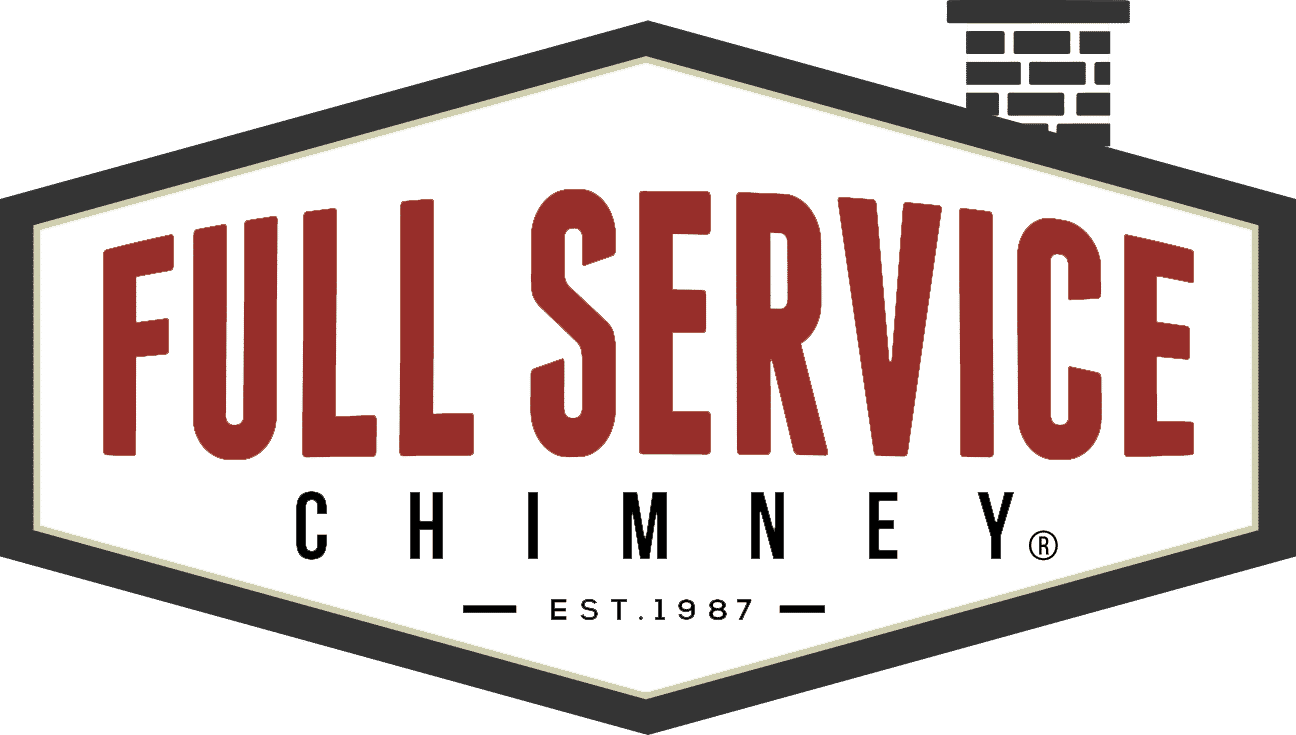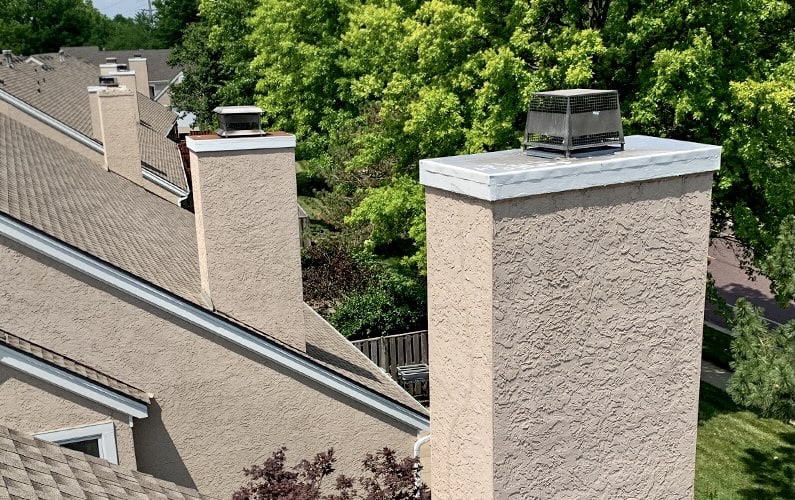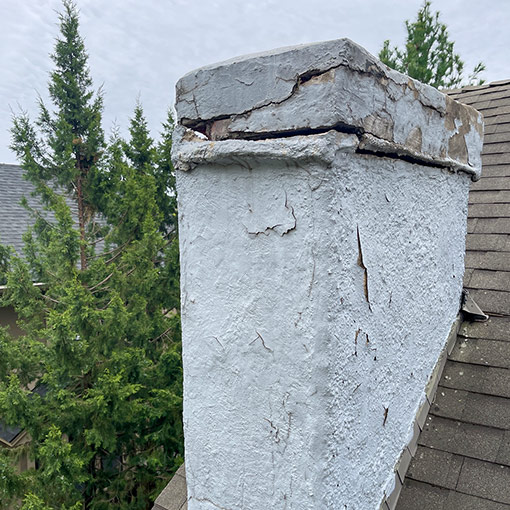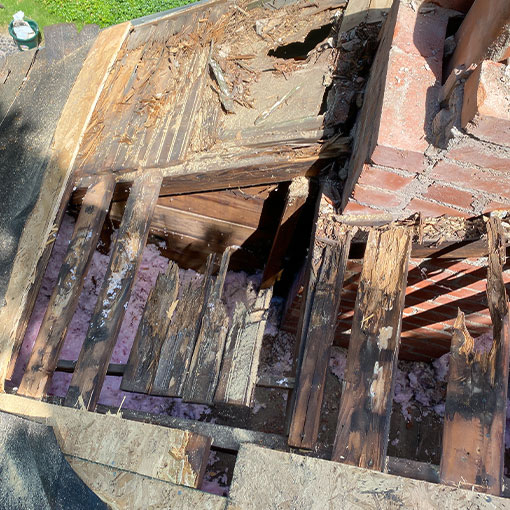The choice of stucco as a home, chimney, and wall building material is increasingly growing in popularity. This is understandable, considering stucco is durable, attractive, and relatively cheap. On the surface, this sounds fantastic; however, after further evaluation, the problem with stucco chimneys and homes is a substantial one.
Originally, stucco was a prevalent choice for homeowners in dry and sandy climates, such as the American Southwest. Once home application techniques improved in the mid to late 1900s, the use of stucco expanded worldwide.
While many homeowners happily enjoy their stucco-covered homes, some have multiple issues that often turn to dangers. Before you consider investing in this material, you should be fully aware of the risks involved.
In this blog post, we will detail the most notable stucco chimney problems, what it’s made of, alarming warning signs, and more!
What is Stucco Made Of?
Traditionally stucco consists of three parts sand, hydrated lime, 3 to 5 gallons of water, and one part Portland cement.
In most cases, it’s mixed on the job site and applied in one of two ways: the three coat system or the one coat system.
-
- Three Coat: Three coat is the traditional stucco application method. It starts with the scratch coat, brown coat, and finish coat. All spread over a metal lath.
- One Coat: The one coat application method is exactly how it sounds: applying one coat instead of three. But fiberglass is added to the mix to assist in minimizing cracking.
The one coat stucco system is significantly quicker and cheaper. Still, it’s not as thick or strong as the traditional method.
An advantage of stucco is the finished coating’s versatility. You can customize your desired color for the final layer and choose between a cement or acrylic finish. The cement finish provides a classic and clean look. But the acrylic has a paint-like vibrancy and more flexibility for creating unique textures.
Painting a stucco chimney or home is possible as well! But it would be best if you waited at least 5-6 weeks after the original installation.
In total, this is a three-to-five-day process that needs to be performed by licensed professionals.
Illustrated Diagram: Anatomy of a Stucco Chimney
What is the Main Problem with Stucco Chimneys?
In general, the main problem with stucco chimneys is that once moisture seeps in, significant issues such as discoloration, mold growth, and, most notably, wood and wall rot are inevitable.
Moisture passes through stucco due to these reasons:
- While most water runs off it, it’s still a porous material that absorbs water.
- The exterior of older homes tends to crack due to settling and expanding.
- The contractor didn’t install it properly.
An adequately installed stucco-covered home in a dry climate will likely thrive for many decades. But, say you live in the pacific northwest, in that case, improperly installed or cracked stucco is like a ticking time bomb for your home. And the worst part is, damages easily go unnoticed until it’s too late.
Here’s a real-world example of stucco damage on a Kansas City, Missouri home.
A customer called us about installing a fireplace insert. While that’s one of our specialties, we meticulously inspect the fireplace and chimney before performing any repairs. As you can see in the inspection pictures below, the chimney is severely cracked, most likely because of settling and old age.
We knew that for the insert to work effectively, the chimney required a rebuild. But during the stucco chimney repair process, we were surprised and disappointed to see this:
Instead of performing a chimney rebuild, the company before us took the easy way out by covering the brick chimney with stucco without using a metal lath. The improper application mixed with the cracking resulted in years of moisture penetration. The wood framing around the chimney paid the price.
These massive damages were impossible to see without tearing the roof apart. This is the epitome of why you need to schedule annual inspections and hire repair work from certified professionals!
How Do You Know if Stucco is Bad?
There are numerous distinct warning signs that it’s failing and allowing water penetration. Follow the list below to know what you should be looking for and where you should be looking for it:
Warning signs:
-
- Cracks: Cracks are the most obvious warning sign that the building material is beginning to fail. Sometimes the cracks can be minuscule, but any cracking is bad news.
- Discolored and Damp: If you’re noticing dark and damp spots on the inside or outside of your home, then it’s undoubtedly absorbing water.
- Missing Chunks: A clear sign of water damage is missing chips and chunks of the material on your home’s exterior.
Where to look:
-
- Windows
- Ground Clearance
- Chimney
- Doors
If you’re still unsure or uncomfortable looking for these signs on your own, hire a professional contractor to investigate it further.
The discoloration on this chimney is a clear indicator that a substantial amount of water is passing through the material.
If your stucco chimney is experiencing severe cracking such as this one, call a professional contractor as soon as possible.
Stucco Installation and Repair Cost
According to Home Guide, the cost of installing stucco ranges from $7000-$15,000 when including both materials and labor. More specifically, the material costs about $3-$9 per square foot.
Repairing stucco on your home is substantially less expensive, ranging from $500-$1500.
Regarding the stucco chimney repair cost, the conversation is relatively nuanced. It’s dependent upon the level of damages and the types of services the company provides.
Some companies, such as Full Service Chimney™, don’t perform stucco chimney repair services. Instead, we suggest upgrading to a more effective and sustainable option such as a masonry rebuild.
Is Stucco Damage Covered by Insurance?
Yes, most homeowners insurance covers stucco damages; however, only if you purchased the insurance before the damage was discovered.
Another stipulation is that the work had to be initially completed by certified contractors. The contractor must not only have a license, but they also need to be licensed in your home’s state.
Some insurance companies only accept claims of stucco damage in the form of water stains and mold. You should contact your insurance provider for more precise information.
Summary
Stucco is a common building material for houses and businesses throughout the world.
It’s visually stunning, cheaper than other materials, and very durable in a suitable climate. But many still don’t understand the problem with stucco houses or putting stucco over brick chimneys.
Before you invest in anything made of stucco, keep in mind that it’s a porous material, meaning it soaks in and lets water pass through over time. And if the home is older and settling, or the material gets improperly installed by an unlicensed worker, water penetration is inevitable.
Stucco chimneys won’t stay this beautiful unless a professional services them annually!
We aren’t attempting to discourage you from this material. Millions of people utilize it for their homes every day. But it’s always crucial that you know what you’re investing in.
Whether you’re having stucco chimney problems or looking to invest in a stucco-covered home, you should strongly consider hiring a certified in-state professional to inspect it.
Check out some other posts from our blog…











